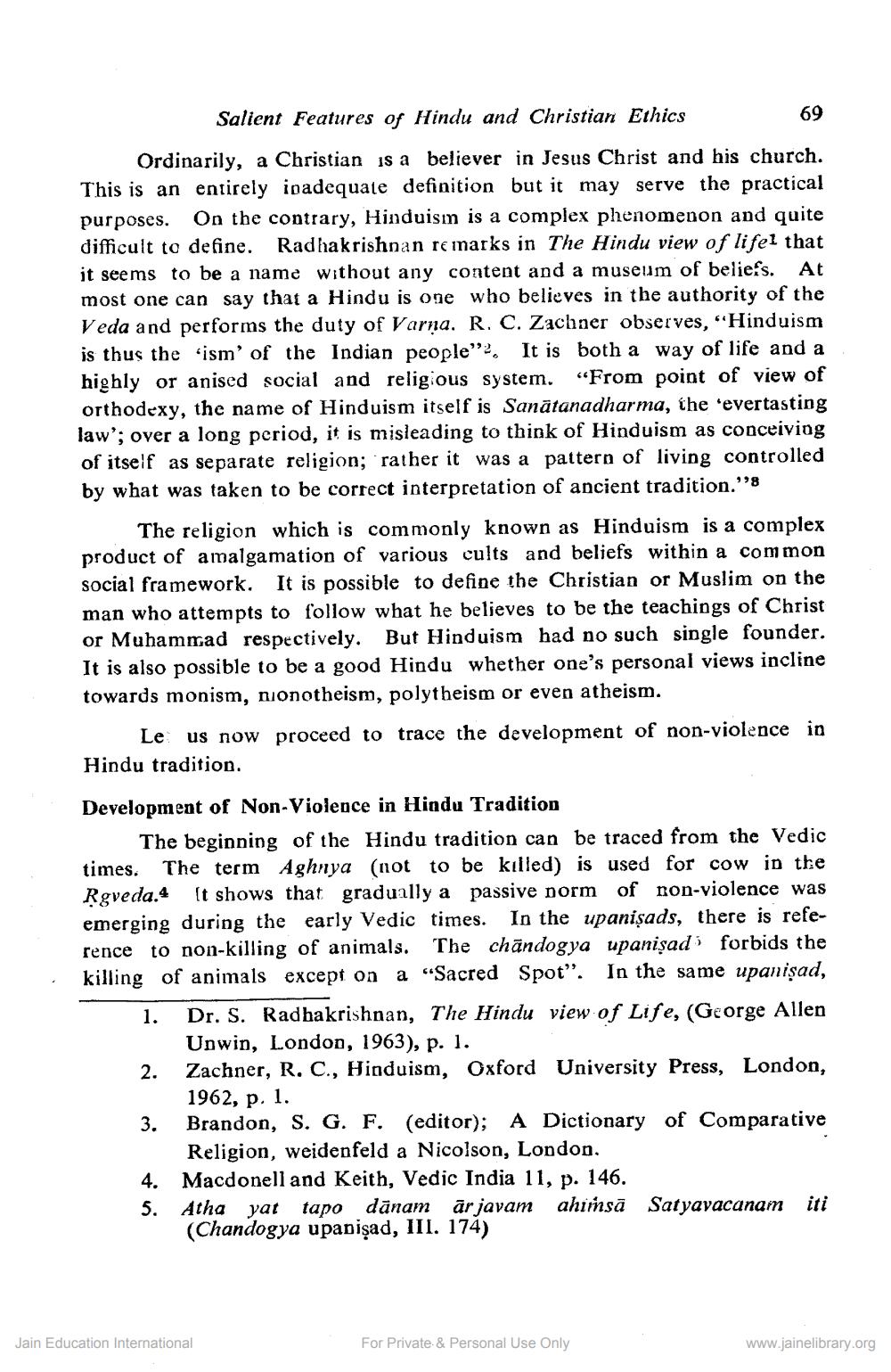________________
Salient Features of Hindu and Christian Ethics
69
Ordinarily, a Christian is a believer in Jesus Christ and his church. This is an entirely ipadequate definition but it may serve the practical purposes. On the contrary, Hinduisın is a complex phenomenon and quite difficult to define. Radhakrishnan remarks in The Hindu view of lifel that it seems to be a name without any content and a museum of beliefs. At most one can say that a Hindu is one who believes in the authority of the Veda and performs the duty of Varna. R. C. Zachner observes, "Hinduism is thus the 'ism of the Indian people'2. It is both a way of life and a highly or anised social and religious system. “From point of view of orthodexy, the name of Hinduism itself is Sanātanadharma, the 'evertasting law'; over a long period, it is misleading to think of Hinduism as conceiving of itself as separate religion; rather it was a pattern of living controlled by what was taken to be correct interpretation of ancient tradition.''8
The religion which is commonly known as Hinduism is a complex product of amalgamation of various cults and beliefs within a common social framework. It is possible to define the Christian or Muslim on the man who attempts to follow what he believes to be the teachings of Christ or Muhammad respectively. But Hinduism had no such single founder. It is also possible to be a good Hindu whether one's personal views incline towards monism, nionotheism, polytheism or even atheism.
Le us now proceed to trace the development of non-violence in Hindu tradition.
Development of Non-Violence in Hindu Tradition
The beginning of the Hindu tradition can be traced from the Vedic times. The term Aghnya (not to be killed) is used for cow in the Rgveda.4 (t shows that gradually a passive norm of non-violence was emerging during the early Vedic times. In the upanişads, the rence to non-killing of animals. The chāndogya upanişad i forbids the killing of animals except on a “Sacred Spot”. In the same upanişad,
1.
2.
3.
Dr. S. Radhakrishnan, The Hindu view of Life, (George Allen Unwin, London, 1963), p. 1. Zachner, R. C., Hinduism, Oxford University Press, London, 1962, p. 1. Brandon, S. G. F. (editor); A Dictionary of Comparative Religion, weidenfeld a Nicolson, London. Macdonell and Keith, Vedic India 11, p. 146. Atha yat tapo dānam ar javam ahirsā Satyavacanam iti (Chandogya upadişad, III. 174)
5.
Jain Education International
For Private- & Personal Use Only
www.jainelibrary.org




